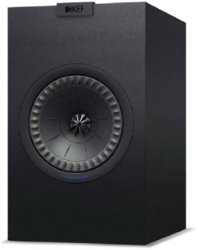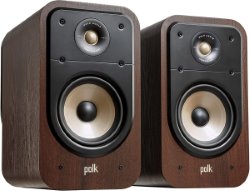KEF Q150 vs. Polk Signature Elite ES20
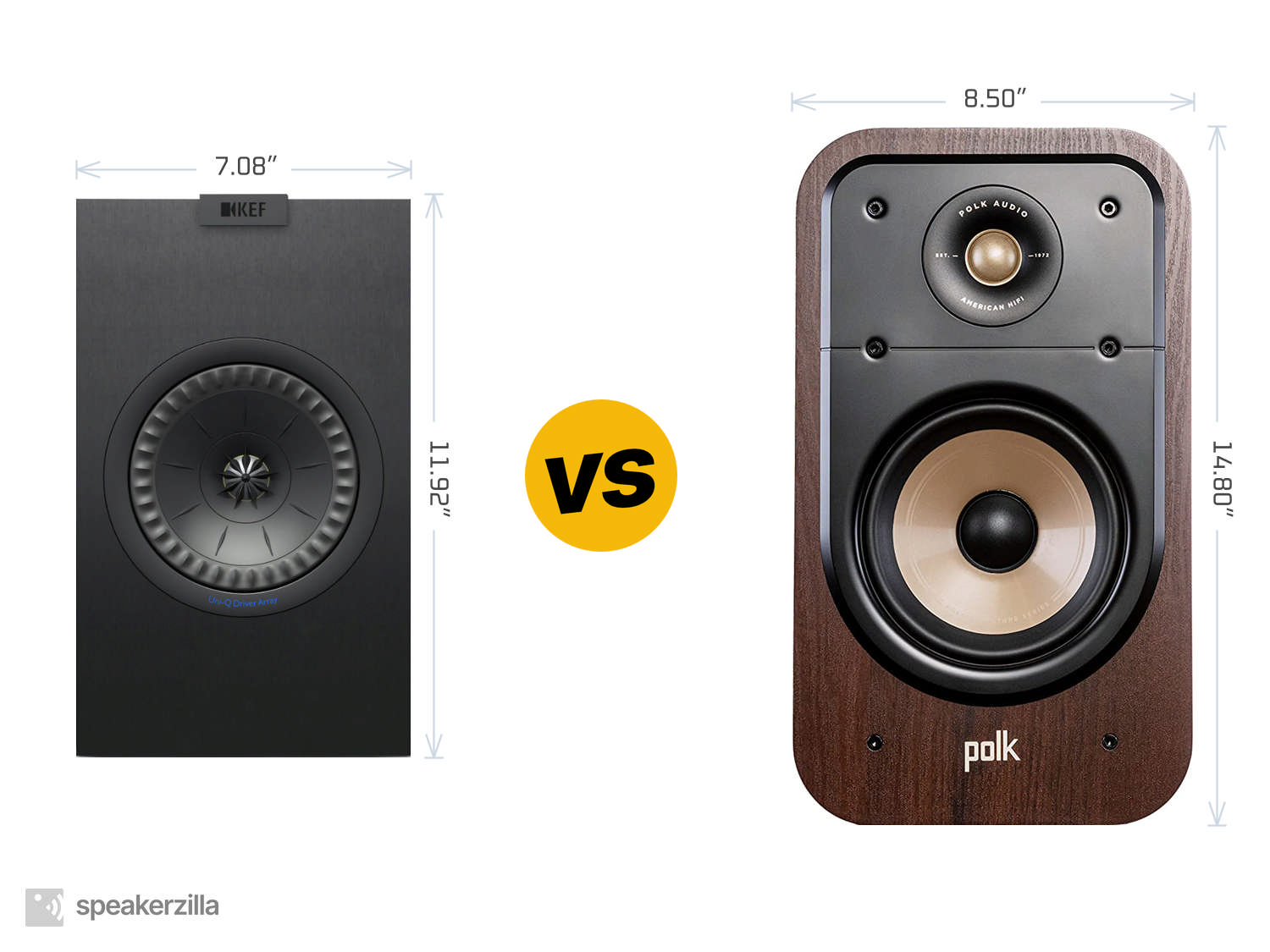
| KEF Q150 Bookshelf Speakers | Polk Audio Signature Elite ES20 Bookshelf Speakers |
| MSRP | |
| $600 | $400 |
| Dimensions (H × W × D) | |
|
11.92” × 7.08” × 10.94” 303mm × 180mm × 278mm |
14.80” × 8.50” × 13.80” 376mm × 216mm × 351mm |
| Power Type | |
| Passive | Passive |
| Frequency Response | |
| 51-28,000 Hz | 44-40,000 Hz |
| ASR Score | |
| 4.8 | n/a |
| ASR Score w/Subwoofer | |
| 6.9 | n/a |
|
Amazon.com
|
Amazon.com
|
Key Takeaways
TLDR Summary: In the realm of accessible high-fidelity sound, the KEF Q150 and Polk Audio Signature Elite ES20 bookshelf speakers represent two philosophies. The Q150 boasts KEF's proprietary Uni-Q driver array, delivering a precise soundstage with seamless integration between the tweeter and woofer. Its minimalistic design favors a purist approach. In contrast, the ES20 from Polk features a dynamic balance acoustic array with a well-regarded power port technology for extended bass response, offering a rich, full-bodied sound. Both contenders promise immersive audio experiences but cater to different auditory preferences and aesthetic tastes in the competitive bookshelf speaker market.
Speaker Comparison
When we dive into the realm of bookshelf speakers, KEF and Polk Audio emerge as two prominent players, each with their own legion of audiophiles. The KEF Q150 and the Polk Audio Signature Elite ES20 are both highly regarded by enthusiasts looking for quality sound without compromising on space. While at first glance they may seem to serve similar functions, a deeper dive into their performance, design, and overall sound signature reveals the nuanced differences that could sway an audiophile towards one or the other.
Design and Build Quality
KEF's Q150 boasts a minimalistic yet modern design, aligning with what we've come to expect from KEF's Q series. The Uni-Q driver array, where the tweeter is mounted at the acoustic center of the midrange cone, is a distinctive feature both aesthetically and functionally. It's built with the intention to improve stereo imaging across a wider listening area. Meanwhile, the Polk Audio Signature Elite ES20 presents a more traditional look with its large, rectangular silhouette and features Polk's proprietary Dynamic Balance acoustic array. This design lends the ES20 a robust and no-nonsense appearance that is suggestive of their commitment to delivering straightforward, powerful performance.
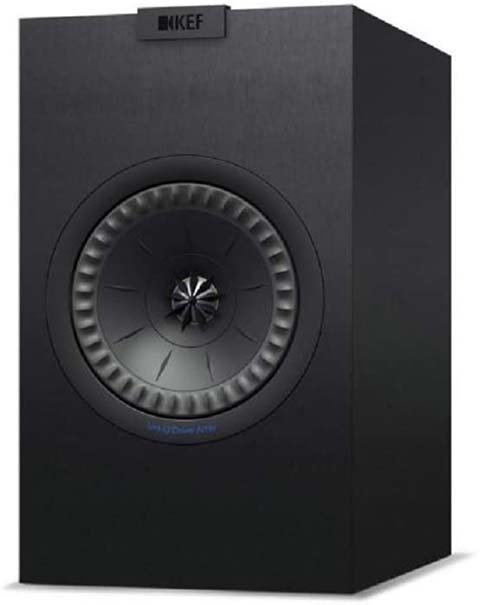
 (at Amazon.com)
(at Amazon.com)Sound Quality
The KEF Q150s are revered for their pristine and refined sound. The Uni-Q driver contributes to a more accurate three-dimensional sound image, which makes these speakers stand out in terms of soundstage and imaging. This precise sound reproduction is ideal for listeners who prefer a more analytical listening experience, especially when considering the clean highs and well-articulated mids. Conversely, the Polk Audio ES20s deliver a warmer sound profile. They have a pronounced low-end presence, thanks to their larger 6.5-inch mid-woofer compared to the 5.25-inch driver of the Q150. This makes the ES20s particularly appealing to those who favor a more robust and full-bodied bass response.
Power and Efficiency
Discussing power handling and efficiency, the KEF Q150s may not require as much power to reach high volumes due to their higher sensitivity rating. This characteristic makes them a more suitable option for pairing with a wide range of amplifiers, including lower-powered tube amps. In contrast, the Polk Audio ES20s, while still relatively efficient, might benefit from a beefier amplifier to drive them, especially if one wants to exploit their dynamic capabilities and their knack for delivering a more impactful sound.
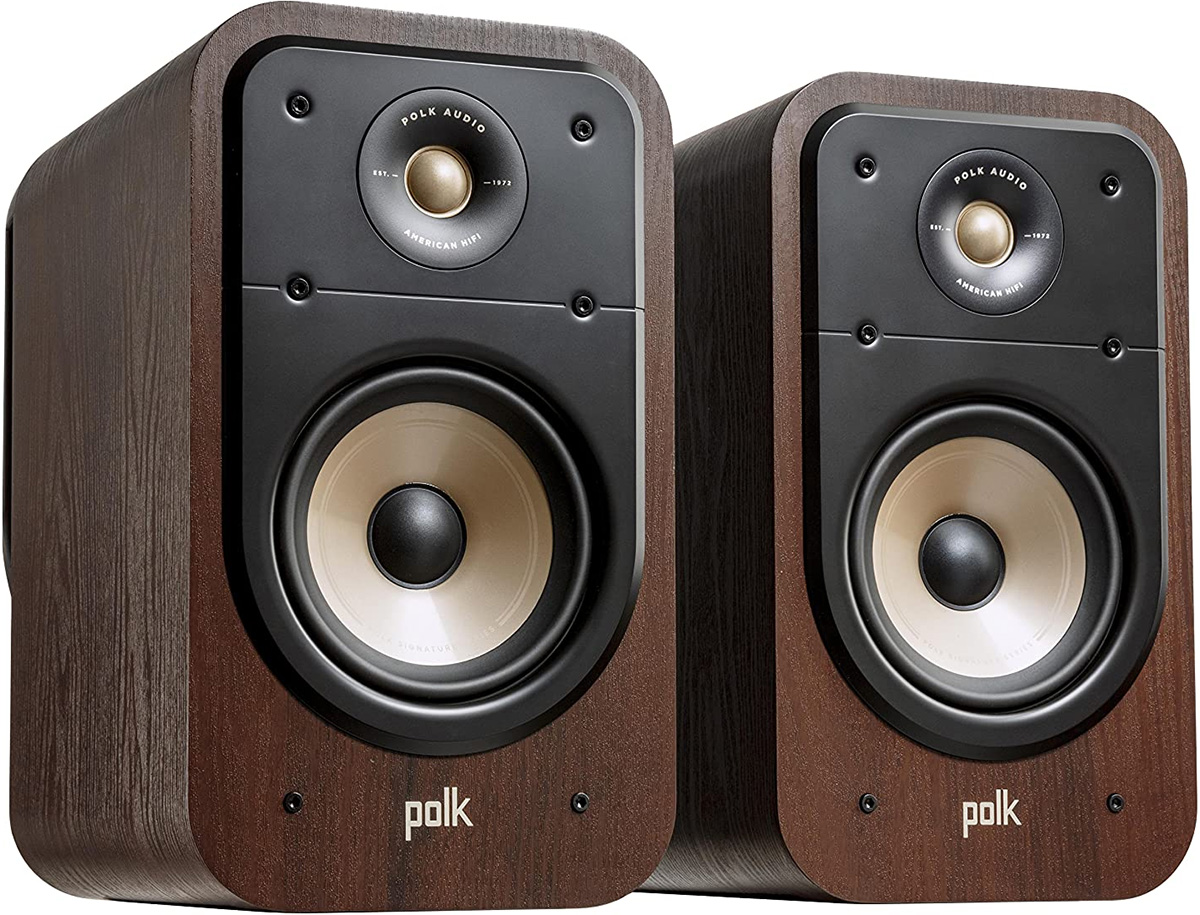
 (at Amazon.com)
(at Amazon.com)The KEF Q150 speakers are compact and can easily blend into most room sizes without overwhelming the space. They also offer an impressive level of detail and clarity for their size. However, their smaller size may contribute to a lighter bass response compared to the Polk Audio ES20s. For audiophiles who prioritize bass or are planning to use their speakers in larger rooms, the ES20s might be the preferred choice due to their bigger drivers and cabinet, which naturally facilitate a stronger bass presence.
Compare to similar speakers
An additional aspect to consider is the versatility in placement. The Q150s are rear-ported, which means they are somewhat sensitive to placement in relation to the wall; a certain distance is recommended to avoid bass boominess. Polk's ES20s, on the other hand, feature Power Port technology, which is a patented downward-firing port design that allows for more flexible placement and consistent bass output regardless of proximity to walls or corners.
Ultimately, choosing between the KEF Q150 and Polk Audio Signature Elite ES20 bookshelf speakers boils down to personal preference and intended use. The Q150s excel in detail retrieval and stereo imaging, making them a delight for critical listening sessions in more intimate settings. The ES20s are tailored for users looking for a more pronounced and enveloping sound, suitable for both music and home theater applications in larger spaces. No matter the choice, both sets of speakers are capable of delivering an enriching audio experience that will satisfy the discerning ears of audiophiles and casual listeners alike.
- KEF Q150 reviews and FAQs
- Polk Signature Elite ES20 reviews and FAQs
Check Current Prices: |
|
|
Amazon.com
|
Amazon.com
|
Affiliate Disclosure: As an Amazon Associate, we earn from qualifying purchases.
